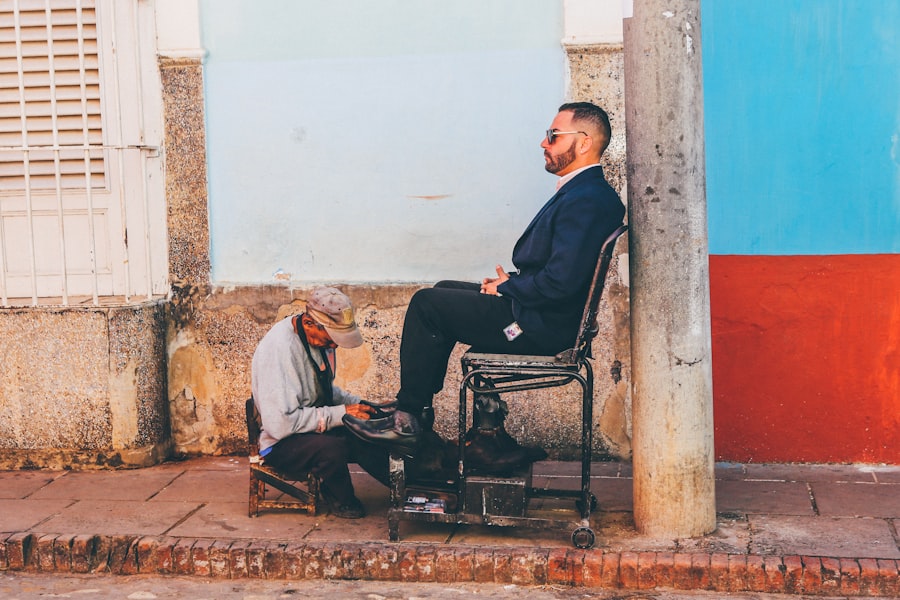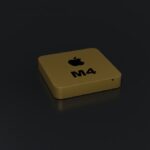The 1920s witnessed significant changes in men’s fashion, reflecting the era’s spirit of freedom and rebellion against traditional norms. This period, known as the “Roaring Twenties,” saw a shift from the conservative styles of previous decades to more daring and innovative designs. The emergence of new trends during this time continues to influence modern fashion.
Men’s clothing in the 1920s departed from the formal and structured attire of the Victorian and Edwardian eras, becoming more relaxed and casual. This change was influenced by various factors, including the jazz age, the increasing popularity of automobiles, and the aftermath of World War I. The rise of Hollywood and the growing influence of movie stars also played a crucial role in shaping fashion trends during this period.
The 1920s men’s fashion was characterized by its boldness, individuality, and rejection of traditional dress codes. This era marked a significant turning point in men’s style, introducing new silhouettes, fabrics, and accessories that reflected the changing attitudes and lifestyles of the time. The fashion innovations of the 1920s laid the groundwork for many aspects of modern menswear.
Key Takeaways
- 1920s men’s fashion was characterized by a departure from traditional styles and a move towards more relaxed and casual attire.
- The Roaring Twenties had a significant influence on men’s style, with a focus on individuality, self-expression, and rebellion against societal norms.
- Key elements of 1920s men’s fashion included wide-legged trousers, tailored suits, high-waisted pants, and loose-fitting shirts.
- Popular accessories in 1920s men’s fashion included fedora hats, pocket squares, suspenders, and two-tone brogues.
- Iconic men’s fashion icons of the 1920s, such as the Great Gatsby, Charlie Chaplin, and Rudolph Valentino, helped shape the era’s fashion trends and continue to inspire modern style.
The Influence of the Roaring Twenties on Men’s Style
The Jazz Age and Its Influence
One of the key influences on men’s fashion during this time was the rise of the jazz age. Jazz music and its associated subculture brought with it a sense of freedom and rebellion, which was reflected in the clothing worn by men.
A Shift Away from Formality
The relaxed and casual nature of jazz clubs and speakeasies influenced men’s fashion, leading to a shift away from formal attire towards more comfortable and stylish clothing.
The Post-War Era
Another significant influence on men’s style in the 1920s was the end of World War I, which brought about a sense of liberation and a desire for change. This led to a more relaxed approach to fashion, with men embracing bold, colorful, and eclectic styles that reflected their newfound freedom.
The war had a profound impact on society, leading to a shift in attitudes and values. Men returning from the war sought to break away from the rigid and conservative clothing of the past, embracing a more relaxed and carefree approach to fashion. This shift was also influenced by the rise of the automobile, which allowed for greater mobility and freedom, leading to a demand for more practical and comfortable clothing.
Additionally, the influence of Hollywood and its glamorous movie stars played a significant role in shaping men’s fashion during this time. The rise of celebrity culture and the influence of leading men such as Rudolph Valentino and Charlie Chaplin helped to popularize new styles and trends, further shaping the fashion of the decade.

Key Elements of 1920s Men’s Fashion
| Element | Description |
|---|---|
| Suit | Three-piece suits with wide lapels and high-waisted trousers |
| Hats | Fedora hats were popular among men |
| Shoes | Oxford and brogue shoes were commonly worn |
| Accessories | Pocket squares, tie pins, and cufflinks were popular accessories |
| Hairstyle | Short, slicked-back hair was a common hairstyle |
1920s men’s fashion was characterized by several key elements that defined the style of the decade. One of the most iconic features of men’s fashion during this time was the adoption of more relaxed and casual clothing. This included the popularization of sportswear such as knickerbockers, polo shirts, and sweaters, which were worn for leisure activities such as golfing and tennis.
The use of lightweight fabrics such as linen and cotton also became more prevalent, reflecting the desire for comfort and practicality in clothing. Another key element of 1920s men’s fashion was the adoption of more form-fitting and streamlined silhouettes. This marked a departure from the loose and boxy styles of previous decades, with a greater emphasis on showcasing the natural contours of the body.
Suits became more tailored and fitted, with narrower lapels and shorter jackets becoming fashionable. This shift towards a more slim and modern silhouette reflected the changing attitudes towards masculinity and style during this time. In addition to these key elements, 1920s men’s fashion also embraced bold patterns and colors.
The use of vibrant hues such as pastel pinks, blues, and greens became popular, adding a sense of vibrancy and energy to men’s clothing. Bold patterns such as stripes, checks, and plaids were also widely embraced, adding a sense of dynamism and individuality to men’s fashion.
Popular Accessories in 1920s Men’s Fashion
Accessories played a crucial role in defining 1920s men’s fashion, adding an extra layer of style and sophistication to outfits. One of the most iconic accessories of the decade was the fedora hat. This classic hat style became synonymous with 1920s fashion, adding a touch of elegance and refinement to men’s outfits.
Fedoras were often worn at a jaunty angle and paired with tailored suits, adding a sense of debonair charm to the wearer. Another popular accessory in 1920s men’s fashion was the pocket square. This small but impactful detail added a pop of color and personality to suits, allowing men to showcase their individual style.
Pocket squares were often folded in intricate ways and coordinated with other elements of an outfit, adding a sense of flair and sophistication. Other popular accessories in 1920s men’s fashion included suspenders, cufflinks, tie pins, and collar bars. These accessories added a sense of polish and refinement to men’s outfits, allowing for personal expression within the confines of formal attire.
Suspenders were often worn instead of belts, adding a touch of old-world charm to suits, while cufflinks and tie pins added a sense of luxury and attention to detail.
Iconic Men’s Fashion Icons of the 1920s

The Suave and Sophisticated Rudolph Valentino
Rudolph Valentino, an Italian actor, was one such figure who popularized the tuxedo as evening wear, establishing it as a staple in men’s formal attire. His impeccable sense of style and charisma made him a symbol of elegance and refinement during the 1920s.
The Carefree and Playful Charlie Chaplin
Another influential figure in 1920s men’s fashion was Charlie Chaplin, whose iconic tramp character became synonymous with a more casual and relaxed approach to dressing. Chaplin’s baggy trousers, oversized shoes, and bowler hat became emblematic of a more carefree and playful style that resonated with audiences around the world.
The Dapper Gentlemen of the Jazz Age
Figures such as F. Scott Fitzgerald, author of “The Great Gatsby,” embodied the spirit of the Jazz Age through their dapper style and sophisticated demeanor. Fitzgerald’s portrayal of wealthy socialites in his novels helped to popularize the image of the well-dressed gentleman, complete with tailored suits, polished shoes, and impeccable grooming.
The Evolution of 1920s Men’s Fashion
The evolution of 1920s men’s fashion can be traced through several key trends that emerged during this dynamic decade. One notable trend was the increasing popularity of casual sportswear for men. This included the adoption of knickerbockers, polo shirts, and sweaters for leisure activities such as golfing and tennis.
The rise of sportswear reflected a shift towards more relaxed and practical clothing that catered to an active lifestyle. Another significant trend in 1920s men’s fashion was the increasing influence of Hollywood on style. The glamorous image of movie stars such as Rudolph Valentino and Douglas Fairbanks helped to popularize new trends in menswear, from tuxedos as evening wear to more casual ensembles for everyday wear.
The influence of Hollywood also led to a greater emphasis on grooming and personal care among men, with an increased focus on hairstyles, grooming products, and overall presentation. The evolution of 1920s men’s fashion also saw a greater emphasis on individuality and self-expression through clothing. This was reflected in the adoption of bold patterns, vibrant colors, and unique accessories that allowed men to showcase their personal style.
The rise of ready-to-wear clothing also made fashion more accessible to a wider audience, allowing for greater experimentation with different styles and trends.
The Legacy of 1920s Men’s Fashion in Modern Style
The legacy of 1920s men’s fashion continues to influence modern style in numerous ways. One enduring legacy is the emphasis on comfort and practicality in clothing. The relaxed silhouettes and lightweight fabrics that became popular in the 1920s continue to inform modern menswear, with an emphasis on casual elegance and ease of movement.
Additionally, many iconic elements of 1920s men’s fashion have become timeless staples in modern wardrobes. The fedora hat remains a classic accessory that adds a touch of sophistication to any outfit, while pocket squares continue to be a popular way for men to add personality to their suits. The influence of Hollywood on menswear also endures, with celebrities continuing to shape trends in menswear through their red carpet appearances and personal style.
The legacy of 1920s men’s fashion can also be seen in contemporary menswear collections that draw inspiration from this dynamic era. Designers continue to reinterpret classic 1920s styles in their collections, from tailored suits with slim silhouettes to bold patterns and colors that add a sense of individuality to modern menswear. In conclusion, 1920s men’s fashion was a defining era that continues to shape modern style in numerous ways.
The influence of the Roaring Twenties on men’s fashion can be seen in its emphasis on comfort, individuality, and practicality, as well as its enduring legacy in iconic accessories and timeless staples. The evolution of 1920s men’s fashion reflects a dynamic period of change and innovation that continues to inspire designers and fashion enthusiasts today.
If you’re interested in learning more about 1920s men’s fashion, you should check out this article on shoesellus.com. They have a great selection of vintage-inspired men’s shoes that would perfectly complement the style of the 1920s. From oxfords to brogues, they have a variety of options that would complete any 1920s-inspired look.
FAQs
What were the popular clothing items for men in the 1920s?
During the 1920s, popular clothing items for men included tailored suits, wide-legged trousers, dress shirts, vests, bow ties, and fedora hats.
What were the common colors and patterns in men’s fashion during the 1920s?
Common colors for men’s fashion in the 1920s included earth tones such as brown, tan, and olive, as well as navy blue and black. Patterns such as pinstripes, plaids, and houndstooth were also popular.
What were the key features of men’s suits in the 1920s?
Men’s suits in the 1920s featured wide, padded shoulders, a straight, loose-fitting silhouette, and high-waisted trousers with wide legs. The jackets were often single-breasted with notch lapels.
What accessories were popular for men in the 1920s?
Popular accessories for men in the 1920s included fedora hats, pocket squares, suspenders, bow ties, cufflinks, and leather oxford or two-tone spectator shoes.
How did men’s fashion change in the 1920s compared to previous decades?
In the 1920s, men’s fashion became more relaxed and casual compared to the previous decades. The silhouette of suits became looser and more comfortable, and there was a shift towards more casual and sporty attire for leisure activities.





















+ There are no comments
Add yours